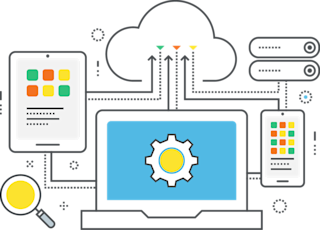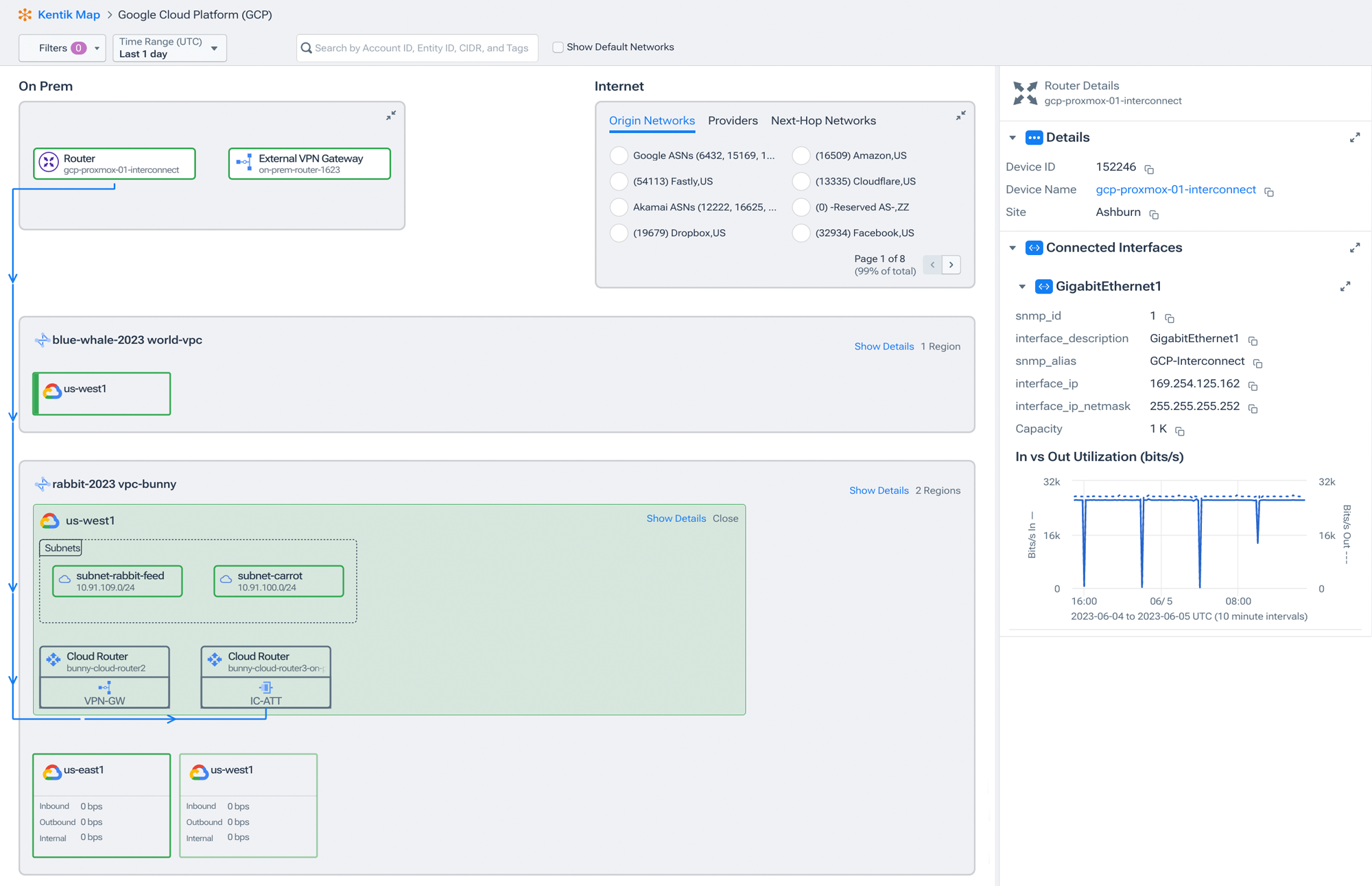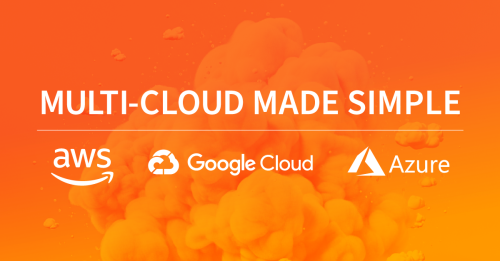Multicloud Networking: Definitions, Benefits, and Challenges
As businesses transition to cloud environments, they are confronted with an avalanche of choices. While the cloud’s power and flexibility are undeniable, selecting a single cloud provider to fulfill all needs might limit an organization’s agility and potential for innovation. The solution? Multicloud networking. Though fraught with complex terminology and concepts, this approach holds significant benefits.

What is Multicloud Networking?
Multicloud networking is an IT strategy businesses employ to diversify their cloud usage. Instead of relying on a single cloud provider, an enterprise uses services from two or more cloud computing platforms, achieving a multi-faceted approach to their digital needs. This method avoids the pitfalls of a single-vendor cloud dependency and lets businesses harness the distinctive benefits each cloud platform provides. A multicloud approach can significantly amplify a business’s agility, innovation, and resilience.
Key elements of multicloud networking include:
- Orchestrating network management across platforms,
- Facilitating connectivity between diverse cloud providers,
- Implementing virtual routers and switches,
- Incorporating cross-platform firewalls and security services,
- Managing bandwidth across multiple clouds,
- Integrating Content Delivery Networks (CDNs),
- Interconnecting cloud environments via virtual private networks (VPNs).
By adopting a multicloud networking strategy, businesses can leverage the most advantageous capabilities of each cloud service, customizing their cloud-based operations to suit their specific needs while mitigating vendor lock-in risks.
Multicloud Networking vs. Hybrid Cloud
While multicloud and hybrid cloud approaches use multiple clouds, their purposes and implementations are distinct:
-
Multicloud Networking is the strategic use of multiple cloud services from different providers. Each cloud in a multicloud setup operates independently of the others. The intention here is to leverage each provider’s unique services, capabilities, or cost efficiencies. For example, a business may use AWS for machine learning capabilities, Google Cloud for its analytics services, and Azure for its seamless integration with Microsoft products.
-
Hybrid Cloud is a subset of multicloud and involves the combination of private (on-premises) and public clouds, with orchestration between them. The primary purpose is to allow data and applications to move between private and public clouds, giving businesses greater flexibility and deployment options and helping to optimize existing infrastructure, security, and compliance.
Transitioning to cloud quickly complicates networking. Learn the top 3 AWS gotchas and how to avoid them.

The Potential of Multicloud Networking
Multicloud networking unlocks a world of possibilities for businesses, enabling them to maximize the unique strengths of each cloud platform. Some advantages include:
- Flexibility and Innovation: Different cloud providers excel in different areas. AWS might offer superior machine learning tools, Azure might provide better integration with Microsoft software, and Google Cloud might offer superior analytics. Multicloud allows a business to take advantage of the best each provider offers.
- Risk Mitigation: Relying on a single cloud provider creates a potential single point of failure. Multicloud networking reduces this risk by distributing workloads across multiple clouds.
- Cost Efficiency: By selecting from each provider’s à la carte offerings, businesses can better optimize costs and avoid paying for unnecessary features.
- Avoiding Vendor Lock-in: Multicloud networking allows businesses to switch workloads between different cloud providers. This prevents dependency on a single provider and allows businesses to negotiate better contracts.
However, while multicloud networking presents many opportunities, it also brings complexity. The increased flexibility and scalability come with the need for advanced network management to ensure seamless interoperability between different cloud platforms.
Multicloud Network Observability
The shift towards multicloud networking brings challenges in the visibility and management of network traffic. Traditional monitoring tools can’t handle the complexity of multicloud networking as they were designed for on-premises environments, not distributed and dynamic cloud environments.
Multicloud networking requires observability platforms designed for the cloud era. Network performance monitoring and diagnostics are essential to track network performance across different cloud platforms. These tools need to be able to ingest and analyze a wide array of network telemetry data, such as flow logs, packet data, API data from cloud providers, and synthetic test data.

What is Multicloud Observability?
Multicloud observability is monitoring and managing the performance, health, and security of an organization’s infrastructure and applications across multiple cloud environments. These environments can include major public cloud platforms like AWS, Google Cloud, Microsoft Azure, and Oracle Cloud Infrastructure, as well as private cloud and on-premises environments. By achieving effective multicloud observability, organizations can gain a holistic view of their network performance, swiftly troubleshoot issues, optimize resource usage, and bolster security measures.
You can learn more about how Kentik enables multicloud observability in this short video where we explore how Kentik’s unified platform provides NetOps professionals with comprehensive visibility across hybrid and multicloud landscapes. Learn how Kentik ingests and visualizes data from various sources including public clouds, SaaS providers, private data centers, and more. See how you can drill down from a high-level overview to granular details such as specific IP addresses, VPC traffic, and performance metrics:
Benefits of Multicloud Observability
Organizations are increasingly adopting multicloud strategies for various reasons, such as improving performance, reducing the risk of downtime, and avoiding vendor lock-in. With this trend, the need for effective multicloud observability has become more vital. Here are a few reasons why multicloud observability is crucial:
- End-to-end visibility: Observability allows you to monitor and manage your applications’ performance across multiple cloud environments, enabling you to quickly identify and resolve issues.
- Performance optimization: With insights gained from multicloud observability, you can optimize application and infrastructure performance, reduce latency, and improve the user experience.
- Cost management: Observability can help in understanding and controlling cloud costs by providing insights into resource utilization across multiple cloud environments.
- Security and compliance: Multicloud observability aids in identifying potential security threats and compliance issues across your cloud environments, thus enabling you to maintain a robust security posture.
Challenges in Multicloud Observability
Despite its numerous advantages, achieving multicloud observability is not without its challenges:
- Data fragmentation: Data is often distributed across multiple cloud platforms across different locations. This fragmentation can make gathering and analyzing data challenging, hindering your ability to make informed decisions.
- Complexity: Each cloud provider has its own set of tools, APIs, and interfaces. Managing and monitoring multiple cloud environments simultaneously can thus become complex and time-consuming.
- Inconsistent metrics: Cloud providers often use different metrics and logs, making it difficult to compare performance across platforms and draw meaningful insights.
Multicloud Networking Takeaways
Multicloud network resources…
- are distributed across public, private, or hybrid clouds from multiple providers
- include connectivity services, virtual routers, switches, load balancers, firewalls, bandwidth management, and more
- are available on-demand and can be managed by the business or third parties
- are monitored using next-gen multicloud network observability platforms that can ingest a variety of telemetry data.
Related Cloud Networking Topics
- Kentik Blog: Multi-Cloud Made Simple: Announcing Kentik Observability Enhancements for AWS and Google Cloud
- Kentik Blog: Announcing Complete Azure Observability for Kentik Cloud
- Kentik Blog: Multi-cloud vs. hybrid cloud networks: What’s the difference?
- Kentipedia entry: What is Cloud Networking?
- Kentipedia entry: Hybrid Cloud Networking
Achieving Multicloud Observability with Kentik
Kentik Cloud collects, analyzes, and contextualizes traffic flow and performance data from all major public clouds –- from Microsoft Azure, Google Cloud, AWS and Oracle Cloud Infrastructure –- along with data from on-premises networks. Kentik enriches all this network telemetry with deep application, business, and security context to provide observability across all hybrid and multicloud environments.

Kentik’s multicloud network observability solutions enable the collection, analysis, and visualization of flow logs generated on AWS Transit Gateways, as well as the automatic visualization of detailed Google Cloud, Microsoft Azure and hybrid cloud infrastructure topologies. These capabilities enable network, cloud, and infrastructure teams to quickly troubleshoot and understand multicloud traffic, future-proofing their organizations against the increasing network complexity associated with cloud adoption.
Kentik provides the tools and insights necessary for a seamless, secure, and optimized multicloud experience. Start a free trial or request a personalized demo today to learn how Kentik can aid your multicloud journey.


